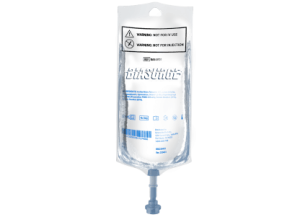Biofilm in Acute Surgical Wounds: Advances in Prevention and Treatment
What is biofilm?

Biofilms are defined as communities of micro-organisms attached to a surface, or one another, and encased within a matrix of extracellular polymeric substance (EPS). The EPS makes up the largest component of the biofilm, and in the biological environment is generally composed of polysaccharides, proteins, glycolipids, blood products, cellular debris, extracellular enzymes, metal ions and extracellular DNA. ¹ It protects the bacteria within, allowing them to exist and reproduce under hostile conditions. It protects them and supports the establishment of tolerance or resistance to the body’s own immunologic response or the delivery of antibiotics.
Biofilms are observed in most chronic wounds and known as the underlying reason for their non-healing and prolonged infections. Biofilms have been identified in other chronic conditions as well, including cystic fibrosis, prostatitis, dental caries, rhinosinusitis, and otitis media. But what about acute conditions and acute surgical wounds?
What is the role of biofilm in surgical site infections?
Despite best practices to prevent infection, surgical site infection rates continue to be high and contribute to morbidity, prolonged hospitalization, and the overall cost of care. In addition, approximately 80% of surgical site infections (SSI) are related to contamination of the surgical wound or implanted medical devices by endogenous opportunistic microbes or biofilm. Biofilm is responsible for the failure of implanted materials, medical devices and increases the incidence of catheter-related bloodstream infections². Prosthetic and implantable devices may become contaminated either immediately during surgery or anytime thereafter. Factors such as differences in implant surfaces and biomaterial composition also play a role in the rate of infection in implanted materials. Infected implants may be treated with removal and replacement with the risk and costs associated with another surgery and new implant.
What are the risks of bacteria re-colonization?
In addition to the surgical risks and costs associated with replacing an infected implant, there is no guarantee that the bacteria will not re-colonize upon the newly implanted device. One of the reasons why implantable devices develop biofilm or become contaminated is that a considerably lower bacterial load can colonize a biomedical device that does not have the blood supply of native vascularized tissue. This lack of vascularization does not allow access of antibiotic delivery to the bacteria and makes implants more susceptible to colonization than other tissues in the human body.
Can biofilm be treated with conventional antibiotics?
Biofilm-associated SSIs are extremely difficult to treat with conventional antibiotics due to several tolerance mechanisms provided by the multidrug-resistant bacteria in biofilms. This microbial tolerance and resistance have contributed to the difficulties in treating biofilm causing infections including implant associated infections. The biofilm acts as a physical barrier that reduces the rate of antibiotic exposure and efficacy. This phenomenon of biofilm recalcitrance makes them incredibly difficult to treat and eradicate successfully⁴, so prevention is imperative.
When trying to prevent surgical site infections, treatment of the offending bacteria is easiest when the microbes are in low numbers and in a free floating, planktonic state. Strategies to prevent surgical site infection include environmental control, surgical technique, and evidence-based infection control practices.
What new advances can help prevent surgical site infections?
Advances in prevention measures in surgery to prevent biofilm formation also includes surgical site irrigation. Antimicrobial solution in conjunction with the mechanical action of fluid moving over the tissue (irrigation) are used by surgeons to disperse tissue debris, exudate, bacteria, and biofilm prior to closing the incision. The ideal irrigation solution is one with a rapid onset and sustained effect, biofilm disruption, broad bactericidal activity and does not induce local or systemic toxicity.
Prevention of biofilm infection in acute surgical wounds may be achieved with coordinated and standardized protocols including the implementation of biofilm eradicating tools. Ongoing attention to surgical sterility practices, continuing education, and introduction of techniques and products that impact surgical site bioburden is critically important for positive surgical outcomes.
To learn more about products that eliminate biofilm microbes, please visit:
BIASURGE® Advanced Surgical Solution – Sanara MedTech
References:
1 Flemming HC, Wingender J. The biofilm matrix. Nat Rev Microbiol 2010; 8: 623–633.
² Percival SL, Kite P. Catheters, and infection control. J Vasc Access 2007; 2: 69–80.
³ NIH Guide: Research on Microbial Biofilms. https://grants.nih.gov/grants/guide/pa-files/pa-03-047.html
⁴ Verderosa A.D., Totsika M., Fairfull-Smith K.E. Bacterial Biofilm Eradication Agents: A Current Review. Front. Chem. 2019; 7:824. doi: 10.3389/fchem.2019.00824.
⁵Khatoon Z, McTiernan CD, Suuronen EJ,
Mah TF, Alarcon EI. Bacterial biofilm formation on implantable devices and approaches to its treatment and prevention. Heliyon. 2018 Dec 28;4(12):e01067. doi: 10.1016/j.heliyon.2018.e01067.




